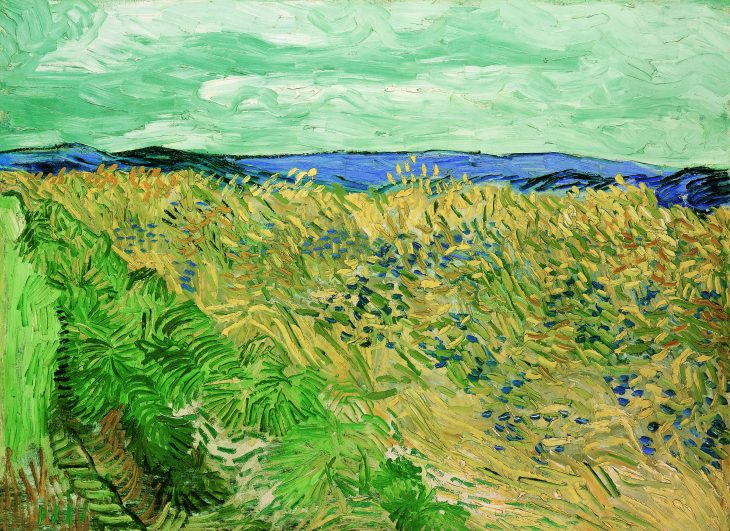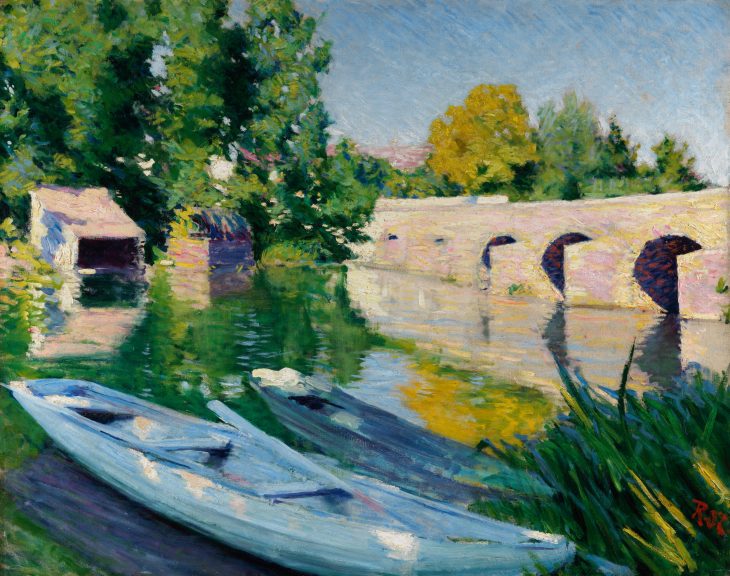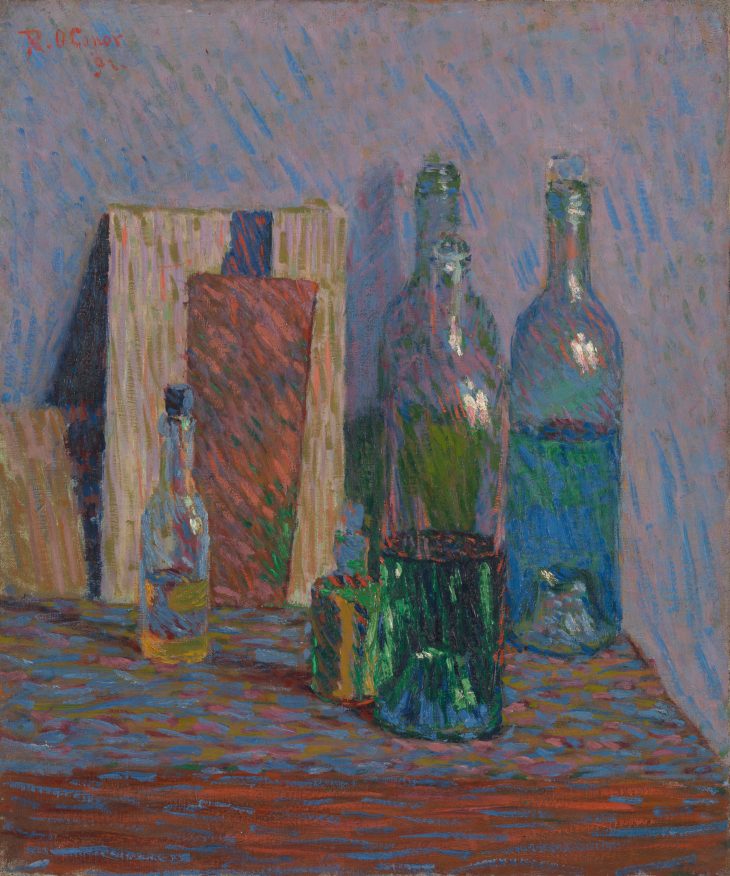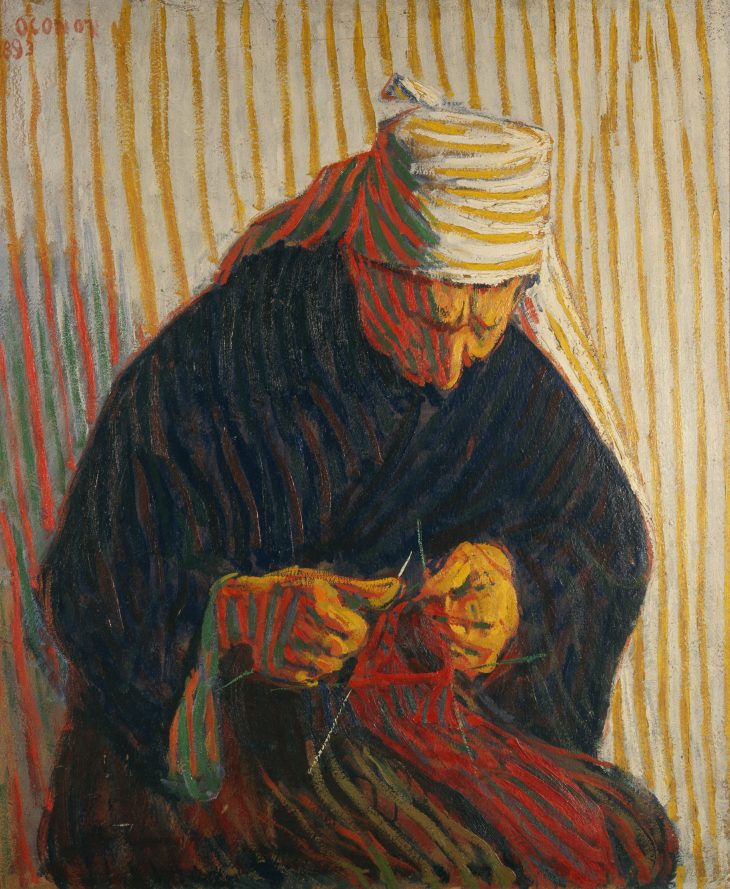Earlier this summer I visited the Kröller-Müller Museum in the Netherlands. It is home to the world’s second largest collection of paintings by Vincent van Gogh and the layout of the galleries reinforces the impact of the Dutchman’s work. After a chronological progress up to, through, and beyond the expanse of the Van Gogh collection, you reach a dead end. You have to retrace your steps and confront the earlier paintings again, but it is impossible to unsee the intensity of the canvases of Van Gogh’s last two years, such as The Café Terrace at Night (1888). After them, the rest of the 19th century looks rather wan and well-mannered.
I was reminded of this experience while wandering around ‘Roderic O’Conor and the Moderns: Between Paris and Pont-Aven’ at the National Gallery of Ireland. The exhibition is the largest gathering of O’Conor’s work in more 30 years, with more than 60 paintings, drawings and etchings across five rooms, but it does not offer a straightforward retrospective. Rather, it focuses on a specific period of the Irish artist’s development, from the mid 1880s through to the early 1900s, when O’Conor mostly resided in the French capital and at the artists’ colony in Pont-Aven on the coast of Brittany. By placing his work from this time within its continental moment, the exhibition reveals the influence of the cutting edge of late 19th-century painting upon O’Conor. Alongside his paintings are hung those of Paul Gauguin, Émile Bernard, Maurice Denis, Paul Sérusier, Armand Seguin and, yes, Van Gogh.

Wheatfield with Cornflowers (1890), Vincent van Gogh. Photo: Peter Schibli; courtesy Fondation Beyeler
O’Conor clearly belongs in such company. The lines of confluence and influence are there to be seen in the exhibition, illuminated by curating that does much to highlight the technical innovations these artists pursued as well as evoking the milieux in which they did so. For instance, a painting such as The Bridge at Grez (c. 1889–90) locates O’Conor among the Impressionists and their followers, south of Paris on the oft-painted Loing. But it also hints at further developments to come with its vibrant, non-mimetic handling of colour and texture. The depiction of the stone bridge may be a response to actual light, but it also presents the viewer with something that unambiguously becomes a solid form in paint.

The Bridge at Grez (c. 1889–90), Roderic O’Conor. Photo: Roy Hewson
However, what marks out O’Conor’s works at this point from those of Bernard, Denis, Sérusier and Seguin is a lack of restraint. The influence of Gauguin and Paul Cézanne in these artists’ paintings is discernible in the flattening both of perspective and the application of paint; this stands in marked contrast to the Irishman’s more sumptuous and fluid brushwork. A necessary tempering of his facility was to be found, though, through the excess of Van Gogh. The only artist featured in the exhibition whom O’Conor never actually met, Van Gogh did not visit Pont-Aven and was dead by 1890. But as the exhibition details, O’Conor was exposed to a considerable range of Van Gogh’s work in Paris soon after the Dutch artist’s death. Back in Pont-Aven, in parallel with the young Swiss artist Cuno Amiet (whose 11 works in the exhibition are a minor revelation), O’Conor then began employing a Van Gogh-like striping technique over the next couple of years. Pushing line and colour to a paradoxical extreme of both confinement and expressivity, he produced a remarkable series of landscapes, portraits and still lifes in this mode.

Still Life with Bottles (1892), Roderic O’Conor. Photo: © Tate, London 2018
Hanging Van Gogh’s Wheat Field with Cornflowers (1890) side-by-side with O’Conor’s Field of Corn, Pont-Aven (1892) is a little unfair. The former painting grabs you with a certainty of vision that the latter does not come close to matching. But it does make Van Gogh’s influence on O’Conor manifest. More arresting are O’Conor’s Landscape, Pont-Aven (1892), The Glade (1892), Breton Peasant Woman Knitting (1893) and Head of a Breton Boy with Cap (c. 1893), in which both palette and composition, though achieved with Van Gogh’s striping technique, are more distinctively the artist’s own. The exhibition also includes a range of fine ink drawings and etchings (made after lessons from Seguin) that emphasise the economy of line required by works on paper.

Breton Peasant Woman Knitting (1893), Roderic O’Conor. Image: Courtesy Broswe & Darby Ltd, London
Gauguin returned to Pont-Aven in 1894. He and O’Conor became friends and the exhibition stresses the impact on the Irishman’s development. In this case, though, the influence is less conclusively for the good. The striping and sheer quantity of paint diminish and, if a work such as Bather by the Sea (c. 1898–1900) is to be considered as some kind of development of Gauguin’s nudes, the development was surely not a good one. The best paintings from this period, such as Blue Sea and Red Rocks, Brittany (c. 1898–9), Orange Rocks and Sea (c. 1898–9), Waves Breaking on the Shore at Sunset (c. 1898–9), and View of Pont-Aven (1899), are both bolder in their brushstrokes and more restrained.
‘Roderic O’Conor and the Moderns: Between Paris and Pont-Aven’ is at the National Gallery of Ireland, Dublin, until 28 October.














![Masterpiece [Re]discovery 2022. Photo: Ben Fisher Photography, courtesy of Masterpiece London](http://zephr.apollo-magazine.com/wp-content/uploads/2022/07/MPL2022_4263.jpg)
Suzanne Valadon’s shifting gaze